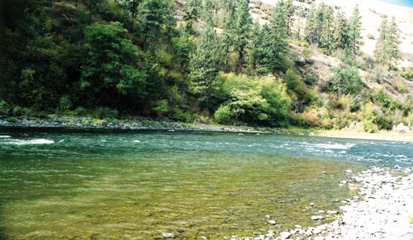Strategy
Once a beginning fly fisherman has experienced these various lies on a small stream, he (she) is ready to fish the larger streams. Fish the larger stream as a group of small streams adjacent to each other. Locate the many feeding, resting, and prime lies and fish them just like you did on the small stream.

For example, Montana’s Madison River can be intimidating to a novice. Ignore its heavy flows and focus on the first twenty feet of the bank side waters. Fish this just like your small stream. Look for current seams because these are prime lies that seem to always collect good fish. Take into account the light intensity, temperature, insect activity, and you will discover the best water to fish.
A large spring creek such as Idaho’s Henry’s Fork can be perplexing. Again, divide it up into small stream segments and look for the resting, feeding, and prime lies.
Huge coastal rivers such as Oregon’s Rogue River can be puzzling with many heavy flows and deep currents that are nearly impossible to penetrate. Remember that anadromous fish must migrate upstream through this river’s maze of rapids. Its salmon and steelhead have hundreds of miles to migrate and must choose the easiest flows to navigate through. This means the fish are swimming upstream through the river’s depths from knee to chest deep, and its current velocity is about as fast as you can walk. Eliminate all of the other water and concentrate your efforts on these fish migration paths. Again take into account the other factors which can influence fish activities. Look for resting lies and migratory highways. Spend your time fishing these areas.


© 2026 The Gale Group, Inc. All rights reserved.
© 2026 Perigee Learning LLC. All rights reserved.
LoveTheOutdoors.com is owned and operated by Advameg, Inc. © 2026 Advameg, Inc.
Camping Adventures • Dutch Oven Cooking • Sports Knots
Fly Tying • Freshwater Fishing • Fly Fishing

